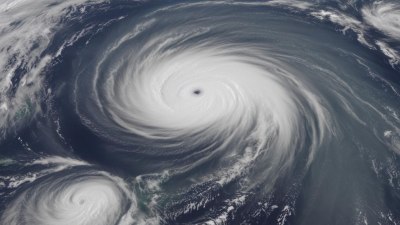Why Weather Apps Always Predict the Worst on Vacation
Explore why weather apps often forecast gloom during vacations and the implications for travelers.

This image was created with the assistance of Freepik
When planning a vacation, one of the most pressing concerns for travelers is the weather. With smartphones becoming ubiquitous, many have turned to weather apps to predict the atmospheric conditions they'll encounter at their chosen destination. However, there seems to be a recurring theme: weather apps often forecast the worst conditions, especially for vacations. This phenomenon can be perplexing, leaving travelers hoping for a reprieve from ominous predictions. In this article, we will explore several reasons why weather apps appear to predict a less-than-ideal scenario for vacationers and what factors contribute to these predictions.
Understanding Weather Data
To comprehend why weather apps forecast poor conditions, it's crucial to understand how weather data is collected and analyzed. Weather forecasting relies on complex algorithms that utilize data from various sources, including satellites, weather stations, and climate models. These sources provide information about temperature, humidity, wind patterns, and atmospheric pressure. However, the interpretation of this data is not as straightforward as it seems. Many weather apps are designed to err on the side of caution, leading to the frequency of dire predictions.
Conservative Forecasting
One key reason why weather apps may predict worse conditions is due to conservative forecasting practices. Developers often recognize that travelers are much more sensitive to adverse weather conditions during their vacations. As a result, they may choose to prioritize safety by providing forecasts that include worst-case scenarios. This can frequently mean predicting rain or storms, even if the likelihood is relatively low, which may create a bias towards less favorable forecasts.
Statistical Bias
Another factor contributing to negative weather forecasts is statistical bias. Weather models rely on historical data to predict future conditions, and if a region has a history of severe weather, the models may overemphasize the likelihood of its recurrence. For example, if a tropical destination typically experiences rain during a specific month, the app may forecast rain even if the current conditions suggest otherwise. This can result in a perception that such apps consistently predict unfavorable weather.
Location-Specific Factors
Weather is inherently local, and predictions can vary significantly based on geographical features and microclimates. While one area may experience sunny weather, a nearby location could be experiencing rainfall due to elevation changes or proximity to bodies of water. Many weather apps aggregate data over large regions, which can dilute localized conditions. Consequently, travelers might receive predictions that do not accurately reflect their specific location or circumstances.
Uncertainty in Weather Models
Weather forecasting involves various models that employ different parameters and methods to predict conditions. These models often produce a range of outputs, and there is an inherent level of uncertainty in their predictions. When multiple models indicate unfavorable outcomes, apps may lean toward the more pessimistic forecasts to represent potential scenarios. As a result, users may unnecessarily brace themselves for bad weather based on predictions that indicate a low probability of actual occurrences.
Error Margin and User Experience
Weather predictions come with an error margin, and many apps choose to highlight this in their forecasts. In practice, this can lead to scenarios where an app highlights the potential for rain or storms as a way to ensure travelers are prepared. This practice, while practical, can make it seem like unfriendly weather is more likely than it truly is when the error range is considered, thus reinforcing the reputation of weather apps predicting the worst.
User Feedback Loop
Users’ experiences and feedback can also create a feedback loop that influences forecast accuracy. When vacationers express disappointment over inaccurate sunny predictions, weather app developers may adjust their algorithms to better align with user preferences. This adjustment can lead to more cautious forecasts, emphasizing adverse conditions to reduce the risk of customer dissatisfaction. Such a dynamic can result in the perception that these apps are always predicting poor weather.
The Media Influence
The media significantly impacts how weather forecasts are presented and interpreted. Sensationalized headlines frequently attract more attention, leading to public perception that severe weather is far more common than it actually is. Weather apps might adapt to this trend by aligning their forecasts with media narratives that emphasize risk and severity, thus leading to a tendency to predict the worst-case scenario. This media influence can inadvertently distort travelers’ expectations, regardless of the actual conditions.
Traveler Psychology
Traveler psychology plays a significant role in how individuals perceive weather forecasts. When people go on vacation, they often have heightened expectations for ideal weather, which induces a sense of vulnerability regarding any predictions of storms or significant weather changes. Weather apps may predict the worst not just to be cautious but also to coincide with the heightened emotional state that travelers experience, leading to a disconnect between traveler expectations and actual outcomes.
The Impact of Climate Change
Climate change has introduced unpredictability in weather patterns worldwide, resulting in increased instances of extreme and unpredictable weather. As a response, weather apps may reflect these uncertain conditions, leaning toward forecasts that indicate instability. As extreme weather events become more prevalent globally, weather apps are likely to predict adverse conditions in anticipation of potential changes, which can make users more aware of the risk of unfavorable weather during their vacation.
Improving Your Experience with Weather Apps
For travelers, navigating the potential for inaccurate weather predictions can be frustrating, especially when looking forward to a relaxed getaway. Some strategies can help ensure you are well-prepared without succumbing to the anxiety of dire forecasts. First, check multiple sources before making assumptions based on a single app. This practice widens your perspective and provides a clearer picture of what to expect. Additionally, consider focusing on local forecasts instead of national apps, as these often provide more precise and localized information. Engaging with user-generated content from various sources can also help improve understanding of real-time weather. Finally, be prepared and maintain flexibility with your plans, as adaptation to changing conditions can sometimes lead to a more enjoyable experience.
Ultimately, understanding why weather apps often predict the worst on vacation involves recognizing the interplay of data analysis, user psychology, and environmental factors. While these forecasts may sometimes seem excessively negative, they often stem from a combination of safety considerations, historical data reliance, and evolving weather patterns. By being aware of these influences, travelers can navigate their vacations with an informed mindset, ensuring that they can enjoy their trips regardless of the weather.










